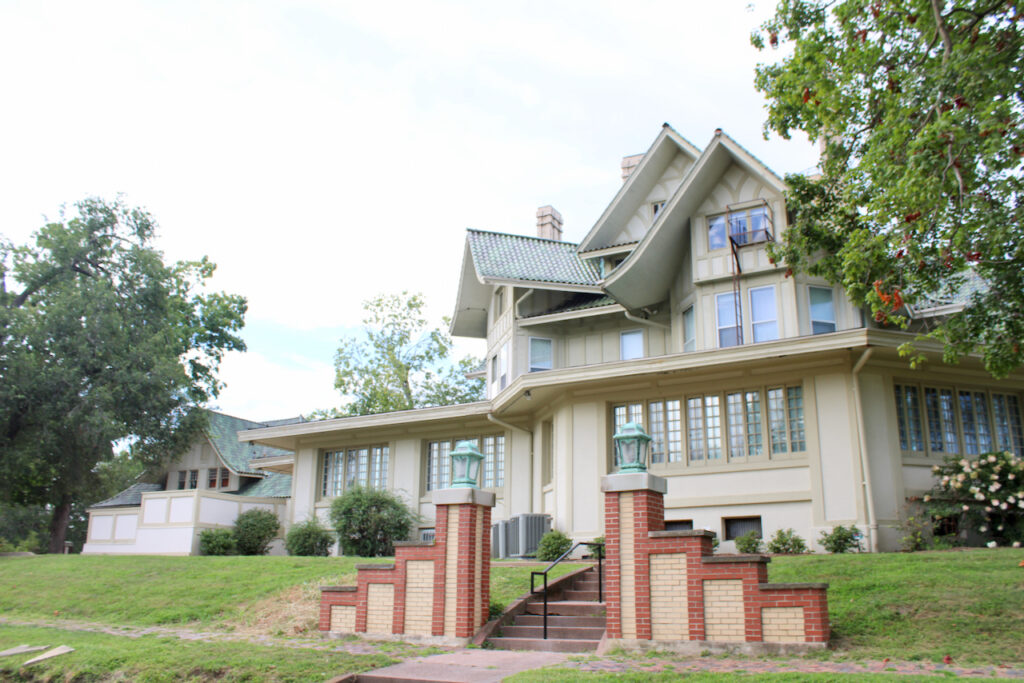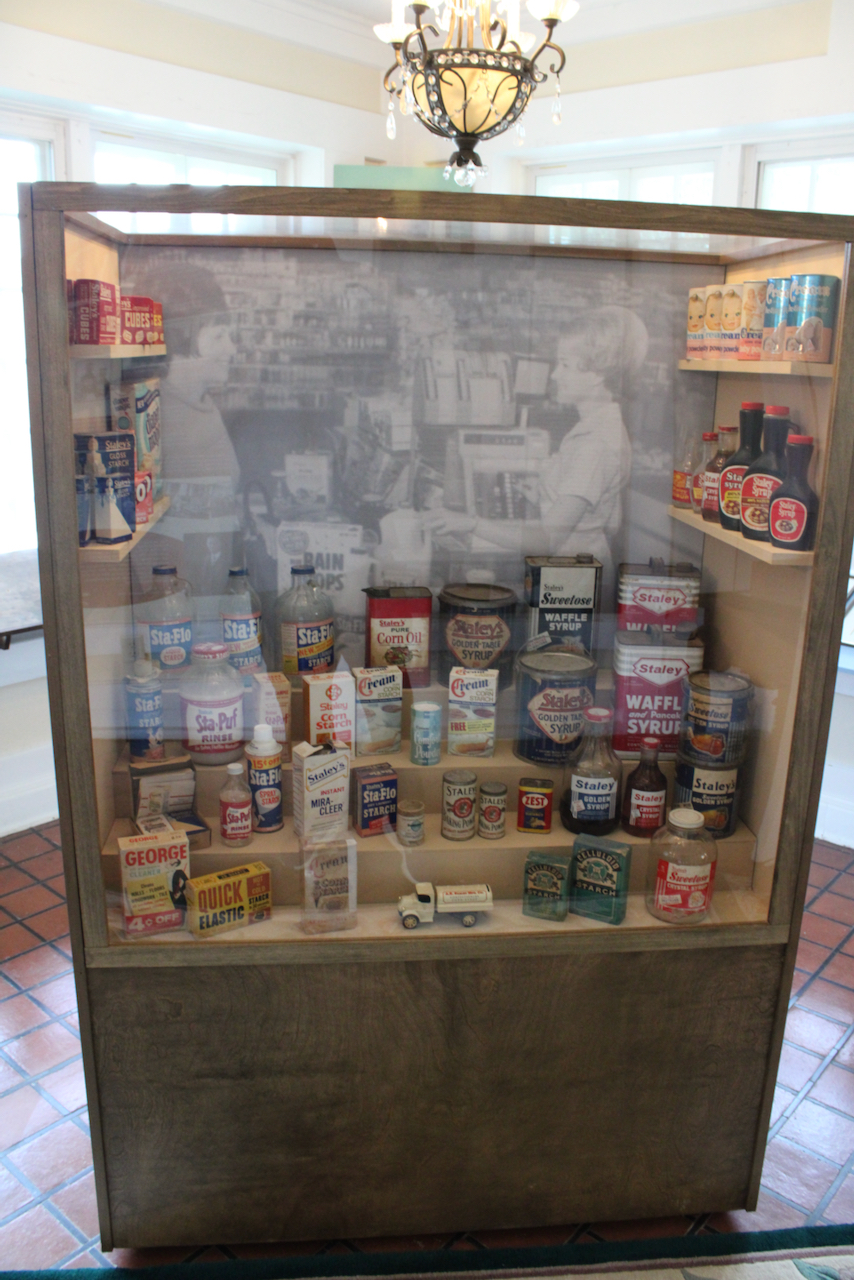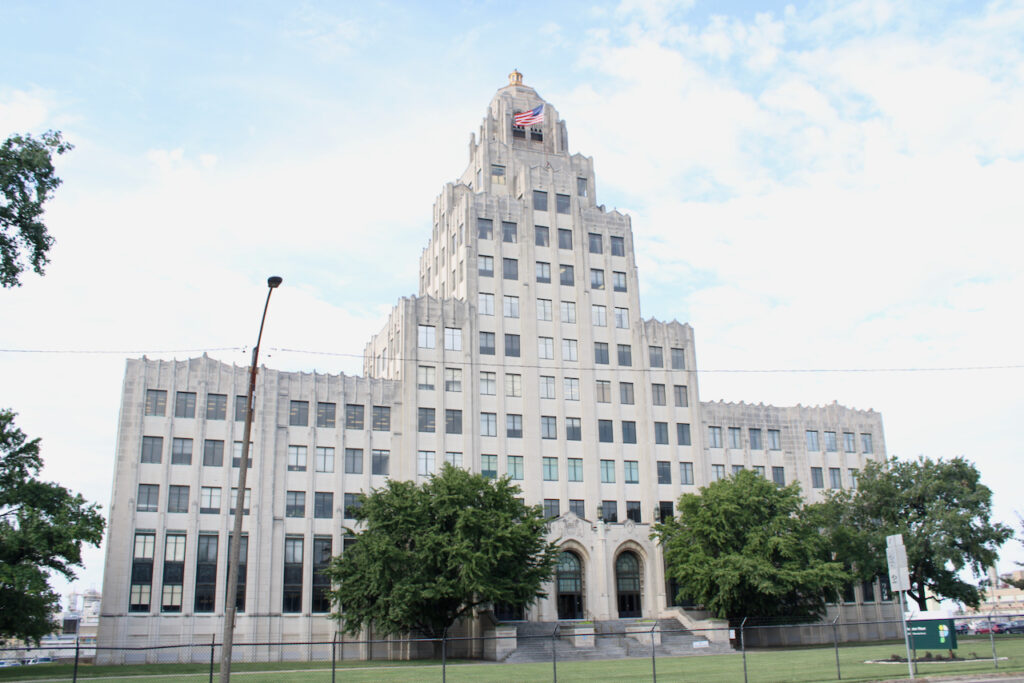Roadtrip: Decatur, from corn to soy to cricket city?
...My heart's in Accra 2024-08-15
Heading into Decatur on Illinois Route 48, you quickly begin to sense a pattern. You pass a field of corn followed by a field of soybeans. Soybeans, then corn, corn, then soybeans. The highway follows the railroad track and every five to ten miles, there’s a small town, little more than a grain elevator, some sort of general store, and occasionally a bar or saloon. By the time I got to Decatur, the main question on my mind was this: Was this planting strategy an economic hedge? Were farmers betting that if one crop failed or the market was lousy, the other crop would sell, or was there some good agricultural reason to rotate corn and soybeans?

Staley’s house – now a museum – in Decatur
And because that’s the sort of guy I am, it’s the first question I asked Laura Jahr, the director of Decatur’s Staley Museum, when she let me in. I was the only museum guest today, so she had some time for extra questions. Gene Staley, as it turns out, is the reason why Illinois’s full of corn and soybeans. Staley grew up in North Carolina and didn’t much care for farming. However, he possessed significant talents as a salesman. The product that made it big for him was baking soda. At turn of the 20th century, baking soda was a novelty that let housewives make cakes and cookies much more easily than whipping eggs full of air. But it was corn starch that made his fortune.
Staley and a single employee began packaging corn starch in Baltimore, a bustling city where he had settled. They were a great success, and quickly Staley ran into supply problems. He purchased a disused mill in Decatur – a reminder that cities have been changing their core industries for well over a hundred years now – and turned it into a corn wet-mill. Local farmers overplanted corn to meet the mill’s needs and quickly experienced lower yields and failing crops.

An exciting array of Staley products available for the home!
Legend has it that Staley had been given soybeans as a child by missionaries, recently returned from Asia with stories of the “wonder bean”. Soy was being grown in North Carolina, mostly for cattle forage, and also because it had a tendency to restore the soil that corn has been grown on. Soybeans “fix” nitrogen, taking atmospheric nitrogen and making it accessible to plants via bacteria that live on soybean roots. And rotating crops helps prevent pests that can destroy one species from taking hold year after year. So Staley began encouraging farmers to plant soy, promising to pay for their beans, and building a mill to extract soybean oil, first through steam and then through hexane extraction.
So that’s why there’s corn followed by soy, followed by corn. And the kernel and the bean – the title of the Staley biography I bought in a local bookstore – turned Decatur into Soy City and Illinois into the US’s #1 soy producer.

The castle in the cornfields: Staley’s headquarters
The heyday of the Staley Company was the first half of the 20th century – it was bought by British firm Tate & Lyle in 1988, but was just spun out as “Primient”, meant to invoke “primary product ingredients”, a US firm that basically has the same assets and purpose of the Staley company. Walking by the plant in the afternoon, a woman who lives across the street told me that they’re hiring, and that the parking lots are full for the first time in a while. She loves the colored lights that illuminate the company headquarters each night, a building understandably called “The Castle in the Cornfields”.
I love stories like Staley’s, which combine multiple transformations of society into a single figure. We can trace three to Staley. One is soybeans, which were virtually unknown in the midwest and only grown as cattle feed in the south, but which have become a major source of protein globally (they long have been in Asia), something important in a world where animal protein feels like an increasingly unsustainable luxury. The second is corn syrup, which Staley and company produced vast quantities of, and helped turn into a primary product ingredient for much of the American food system, with seriously negative effects. At the 21c Hotel in St. Louis earlier the same day, I saw a wonderful piece in which an artist had encrusted three cans in sequins, one of Budweiser, one of Red Bull and one of Coca-Cola. She titled it “Canned corn, canned hype, canned corn”.
The third transformation is a bank shot, but an arguable one. In the early 20th century, college football was quite popular but professional football had not really developed. Instead industrial teams played one another and Staley really wanted his Decatur team to be competitive. They faced off against another factory team and Staley was very frustrated that that team appeared to have employed some ringers, recent college football players who were evidently on the payroll mostly for their football prowess. Staley figured if that’s the way the game was played, he’d just go one better and recruited a whole football team made of some of the best college players of the day, all of whom he hired at the Staley factory. In fairness, they did work at the factory, though Staley gave them two hours off each day for practice. When they started playing the local competition, they crushed them.
However, running a football team is different from running a factory and significantly more expensive. Staley discovered that the road games played in Chicago sold vastly more tickets than those played in Decatur, where he mostly sold highly subsidized tickets to his factory employees. So the team lasted as Staley’s team from 1920 to 1922 before becoming the Chicago Bears. Arguably, we have Staley to credit or blame for professional football in the US. (Baseball was already significantly professionalized, so he was replicating an existing system.)
I didn’t come to Decatur for Staley, though. Decatur was, in many ways, my primary destination on this trip. I have organized this road trip around the idea of the undervalued city. I’ve been using a simple metric, median home price over median income to figure what cities are undervalued. Decatur is number one in the US. Last year you could buy a median home indicator for a little less than two years median salary.

The Masons lodge in Decatur, in need of some love.
“Cheap” is a complicated word. We tend to be suspicious of the cheap. It’s a synonym for shoddy, not well-made, low quality. I wasn’t entirely sure what to expect coming to Decatur. I had a tough time finding many attractions I wanted to see or restaurants I wanted to visit. And so I was worried that I might have set this trip up around a city I was going to dislike. But that’s not what happened.
Decatur appears from nowhere, out of the fields. It’s got a tidy and surprisingly energetic downtown. Walking around on a Wednesday evening, parking lots were busy, people were dining outside at a variety of restaurants. There was a microbrewery and a cigar bar, and cute shops, including Novel Ideas, one of the best used bookstores I found in my recent travels. You weren’t going to mistake Decatur for Youngstown, OH or Bradford, PA, some of the most downtrodden cities I’ve been to on this trip. The city has shrunk in population since its heyday in the 1980s (94,000) and is down to about 70,000, but there are signs that this might be the bottom. Unemployment is higher than the state average, but there are significant manufacturing employers, and there’s evidence of an immigrant population, a highly rated taqueria and a Latin market, as well as some American retirees moving in, drawn by low house prices.
I’m reading the largest insect protein facility in the US in the city, growing crickets for animal feed. (If anyone can get me a tour of this facility, I will turn the car around right now!) On a sunny Wednesday night in August, watching streets filled with life, Decatur looks like a pretty good place to be.
The trip so far: Driving by Data Set By the numbers: What statistics can and can’t tell you about undervalued cities A Square Deal in Binghamton Buried, with dignity, in Elmira Side Quest in northern Ohio In search of the “statistically improbable restaurant”
The post Roadtrip: Decatur, from corn to soy to cricket city? appeared first on Ethan Zuckerman.